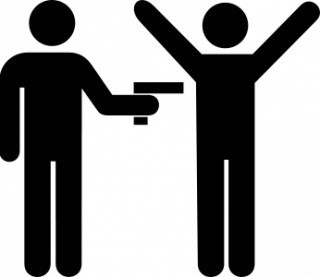The criminal code establishes punishment for a crime. Art. 14 of the Criminal Code discloses the very concept of an illegal act, for which sanctions are provided. Consider this norm in detail. 
Signs of crime
In the article under consideration, the main characteristics of the act of the subject are indicated, in the presence of which it is recognized as illegal and involves punishment. First of all, the norm determines that a person who has committed a dangerous act prohibited by the code may be held liable. It is a threat to society. In Art. 14 of the Criminal Code is also determined that is not a punishable act. In particular, the norm establishes that the behavior of the subject (inaction or action) can formally fall within the scope of the code, but because of its insignificance does not pose a threat to society.
Art. 14 of the Criminal Code with comments
The considered norm interprets the concept of an illegal, criminally punishable act. At the same time, the article comprehensively names the signs of a crime. These include punishability, guilt, wrongfulness. An integral characteristic of the act is the presence of public danger. These criteria must be present in the composition. In Art. 14 of the Criminal Code of the Russian Federation it is explained that the guilty person can commit both action and inaction. The former is characterized by active, and the latter by passive behavior. In addition to the external manifestation, these acts must be conscious. 
Exceptional Cases
The set of characteristics given in Art. 14 of the Criminal Code, allows you to identify several situations in which an act is not considered unlawful. So, for example, there may be an opportunity to perform some action. Such a situation arises with physical coercion or under the influence of force majeure. Also, the subject may not be aware of the action being performed. For example, it can be reflex movements, behavior in a state of insanity, limited legal capacity, and so on.
Nuance
The problem of recognizing a behavioral act as criminal under the influence of mental coercion is solved taking into account the rules of Art. 39. It is believed that in this state a citizen has the opportunity to manage his actions. In Art. 39 there are provisions relating to emergency. The norm describes cases when formally a criminal action will not be recognized as such. Detection of intent is not recognized as a stage in the commission of an illegal act. But if a certain degree of threat to society is achieved, the legislator qualifies the behavioral act as criminally punishable. 
Public danger
It is a material characteristic of an unlawful behavioral act and reveals its social essence. The threat is expressed in harm or the likelihood of causing it to the state, person or society. Objects protected by criminal provisions are defined in Art. 2 codes. In this case, the person’s personality is put first. Social danger is characterized by subjective and objective criteria. The latter are, for example, the significance of the object of the attack, the degree of harm, the place, time of the wrongful act, and so on. Subjective signs include the form of guilt, motives, etc. 
Wrongfulness
It means the prohibition of a behavioral act by criminal norms. The significance of wrongfulness lies in the fact that the implementation of the established requirements will determine the implementation of the principle of legality proclaimed by the code.It must be said that after normative fixing in practice, the application of the provisions by analogy ceased, which was fixed by the foundations of criminal law. Depending on whether the threat to society and wrongfulness are named among the characteristics of a behavioral act, they speak of a formal, material or material-formal composition. In Art. 14 of the Criminal Code of the Russian Federation, both criteria are present. This means that the definition of a behavioral act is material and formal.
Guilt
An indication of it in the definition of a crime indicates that the legislation takes the position of subjective, but not objective imputation. This means that a behavioral act is recognized as a criminal offense, taking into account the citizen’s mental attitude to inaction / actions and consequences in the form of negligence or intent. Recognition of the priority of such imputation is confirmed by Art. 28 of the Code, which defines innocent harm. 
Punishability
This sign means that, under criminal law, a person who has committed a behavioral act prohibited by the code may be held liable. Meanwhile, there are several exceptions. The Criminal Code contains rules by which a citizen is exempted from punishment or liability for illegal behavioral acts. Exceptions, in particular, are set out in Art. 75-85.
Insignificance
The act may not entail substantial harm to the object protected by criminal law or pose no threat at all. In such situations, they speak of the insignificance of the act. Its presence indicates an insufficient degree of danger and is not considered a criminal offense. The decision to determine the significance of a behavioral act is the responsibility of the court and the investigation. It is based on an analysis of all the signs of a crime.
